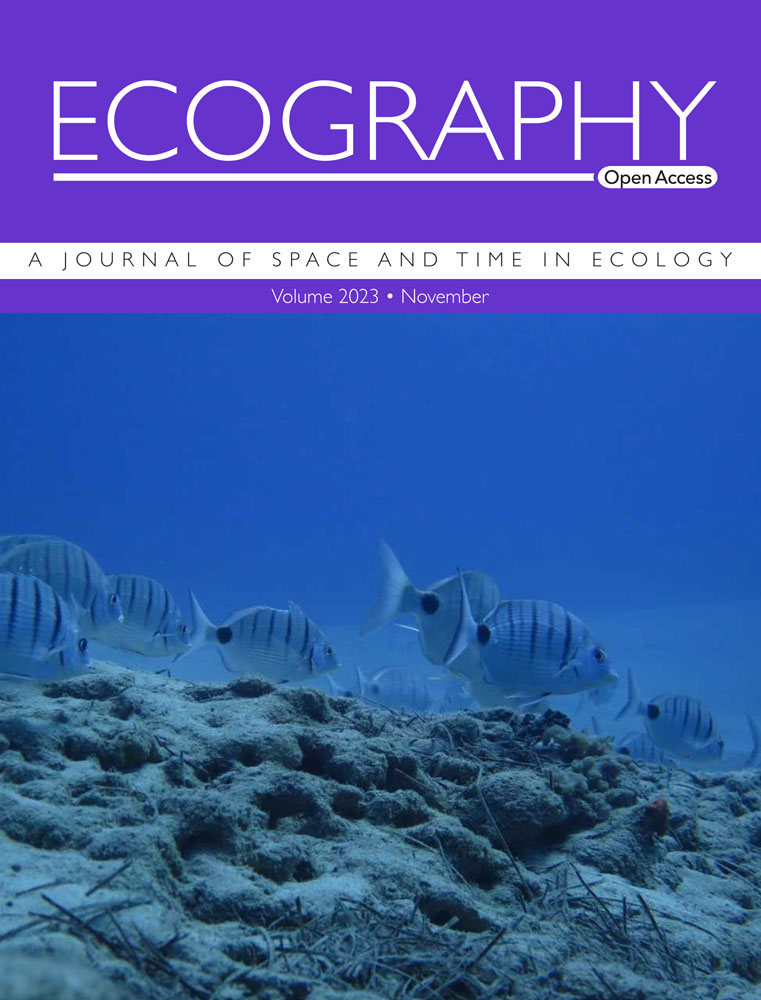Drivers of plant community composition and diversity in low Arctic western Greenland
IF 5.4
1区 环境科学与生态学
Q1 BIODIVERSITY CONSERVATION
引用次数: 0
Abstract
The Arctic experiences rapid climate change, but our ability to predict how this will influence plant communities is hampered by a lack of data on the extent to which different species are associated with particular environmental conditions, how these conditions are interlinked, and how they will change in coming years. Increasing temperatures may negatively affect plants associated with cold areas due to increased competition with warm-adapted species, but less so if local temperature variability is larger than the expected increase. Here we studied the potential drivers of vegetation composition and species richness along coast to inland and altitudinal gradients by the Nuuk fjord in western Greenland using hierarchical modelling of species communities (HMSC) and linear mixed models. Community composition was more strongly associated with random variability at intermediate spatial scales (among plot groups 500 m apart) than with large-scale variability in summer temperature, altitude or soil moisture, and the variation in community composition along the fjord was small. Species richness was related to plant cover, altitude and slope steepness, which explained 42% of the variation, but not to summer temperature. Jointly, this suggests that the direct effect of climate change will be weak, and that many species are associated with microhabitat variability. However, species richness peaked at intermediate cover, suggesting that an increase in plant cover under warming climatic conditions may lead to decreasing plant diversity.低北极西格陵兰岛植物群落组成和多样性的驱动因素
北极经历着快速的气候变化,但由于缺乏关于不同物种与特定环境条件的关联程度、这些条件如何相互联系以及它们在未来几年将如何变化的数据,我们预测这将如何影响植物群落的能力受到了阻碍。由于与适应温暖的物种的竞争加剧,温度升高可能对寒冷地区的植物产生负面影响,但如果当地温度变化大于预期的增加,则影响较小。本文采用物种群落分层模型和线性混合模型,研究了格陵兰岛西部努克峡湾沿海向内陆和海拔梯度的植被组成和物种丰富度的潜在驱动因素。群落组成在中间空间尺度(间隔500 m的样地组)上与随机变异的相关性较强,与夏季温度、海拔和土壤湿度的大尺度变异的相关性较弱,群落组成沿海湾的变化较小。物种丰富度与植被覆盖度、海拔高度和坡度有关,可解释42%的变异,但与夏季温度无关。综上所述,这表明气候变化的直接影响将是微弱的,许多物种与微栖息地的变异性有关。然而,物种丰富度在中等覆盖度时达到峰值,表明气候变暖条件下植物覆盖度的增加可能导致植物多样性的减少。
本文章由计算机程序翻译,如有差异,请以英文原文为准。
求助全文
约1分钟内获得全文
求助全文
来源期刊

Ecography
环境科学-生态学
CiteScore
11.60
自引率
3.40%
发文量
122
审稿时长
8-16 weeks
期刊介绍:
ECOGRAPHY publishes exciting, novel, and important articles that significantly advance understanding of ecological or biodiversity patterns in space or time. Papers focusing on conservation or restoration are welcomed, provided they are anchored in ecological theory and convey a general message that goes beyond a single case study. We encourage papers that seek advancing the field through the development and testing of theory or methodology, or by proposing new tools for analysis or interpretation of ecological phenomena. Manuscripts are expected to address general principles in ecology, though they may do so using a specific model system if they adequately frame the problem relative to a generalized ecological question or problem.
Purely descriptive papers are considered only if breaking new ground and/or describing patterns seldom explored. Studies focused on a single species or single location are generally discouraged unless they make a significant contribution to advancing general theory or understanding of biodiversity patterns and processes. Manuscripts merely confirming or marginally extending results of previous work are unlikely to be considered in Ecography.
Papers are judged by virtue of their originality, appeal to general interest, and their contribution to new developments in studies of spatial and temporal ecological patterns. There are no biases with regard to taxon, biome, or biogeographical area.
 求助内容:
求助内容: 应助结果提醒方式:
应助结果提醒方式:


